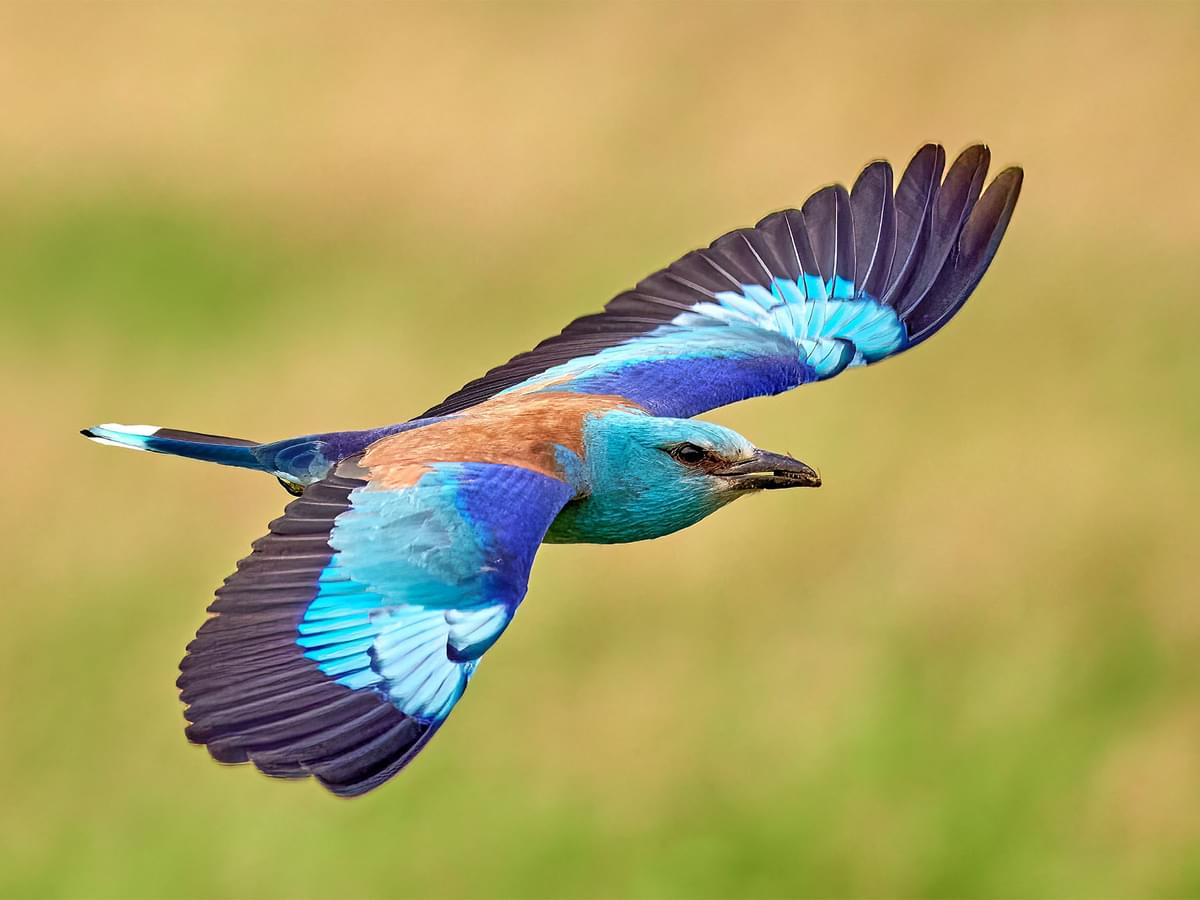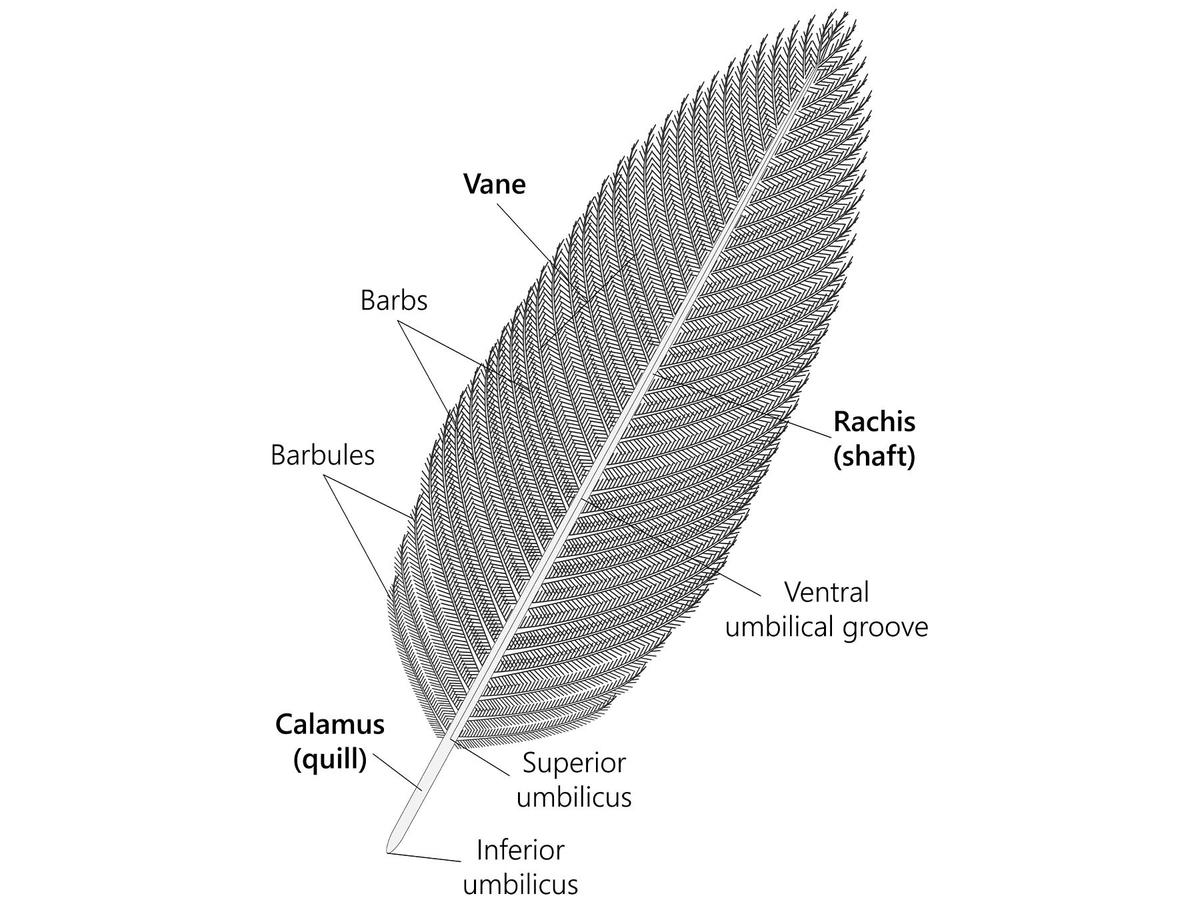Flight Feathers: Structure and Maintenance

Flight is probably the first thing associated with birds, and rightly so. This amazing ability has allowed avians to live in diverse habitats worldwide, often traveling thousands of miles on migration each year and reaching speeds otherwise unknown in the animal world.
From the strong but flexible central rachis to the branching barbs and barbules zipped in place by microscopic hooklets, the flight feather is perfectly evolved to combine properties like waterproofing, rigidity, and aerodynamic qualities, all in an extremely lightweight package.
Each remige (primary or secondary feather) and each rectrice (tail feather) are valued, and birds devote much of their day to meticulously maintaining each one.
In this guide, we’ll be taking a closer look at the anatomy of remiges and rectrices, their role in flight, and the importance of regular feather maintenance for bird survival. Read along to learn all about flight feathers - one of the avians' most advanced assets!
Anatomy of Flight Feathers
Parts of a Feather
Flight feathers are mostly pennaceous (stiff and structured), unlike down feathers, which are plumulaceous (soft and fluffy). However, flight feathers may include a short plumulaceous portion restricted to the base of the rachis.
The major avian flight feathers are the remiges (primaries and secondaries of the wings) and rectrices (flight feathers of the tail). Let’s take a look at some of their key components.
Shaft
The shaft is the feather’s central ‘stalk,’ consisting of a calamus, which is embedded in the skin, and a rachis, which supports both the plumulaceous and pennaceous barbs and barbules.
Vanes
Each feather has a vane of barbs and barbules on either side of the rachis. The barbs branch out from the rachis and are lined with their own branching structures called barbules. The barbules are further lined with tiny hooklets that keep them interlocked, forming a wind and waterproof structure.
The vanes of rectrices are relatively symmetrical, while the barbs of the leading edge or anterior vane of remiges are much shorter and stiffer than those on the trailing or posterior edge.

Key components of an avian flight feather. The major avian flight feathers are the remiges (primaries and secondaries of the wings) and rectrices (flight feathers of the tail)
Types of Flight Feathers
Birds have three major groups of flight feathers that grow in specific areas of the body. Continue reading to learn about their position and properties.
Primary feathers
Primary feathers are the largest remiges of a bird’s wing and are located on the posterior edge toward the wingtip.
Many birds have conspicuous, slotted primary feathers with distinct gaps between them, like the fingers of our hands. However, some birds hold their primaries together tightly.
The stiff primaries attach to the ‘hand bones’ and can be moved and rotated during flight, so birds have a relatively high degree of control over them. Primary feathers generate thrust, or forward motion, in flight.
Secondary and tertiary feathers
The secondaries are located along the posterior edge of the wing along the ulna bone, between the primary feathers and the bird’s body.
These feathers are also stiff but smaller and less mobile than primary feathers. Secondaries are used to generate lift, or upward motion, in flight.
Birds also have a few (often three) tertial feathers attached to the tissue around the bird’s ulna or humerus bone. These feathers are less critical for flight than the secondaries.
Rectrices
The tail feathers of birds are generally important for flight and are used for controlling speed and direction. However, many species, including Pheasants and Peafowl, have evolved impressive ornamental tail feathers that may actually hinder flight.
Most birds have ten to twelve rectrices, but only the central pair is attached to bone. These central rectrices are quite symmetrical, although the surrounding pairs become less symmetrical toward the edges of the tail.

A Red Kite. Primary feathers are the largest remiges of a bird’s wing and are located on the posterior edge toward the wingtip

A Great Cormorant. Secondary feathers are located along the posterior edge of the wing along the ulna bone, between the primary feathers and the bird’s body

A Red-tailed Hawk. The rectrices (tail feathers) of birds are generally important for flight and are used for controlling speed and direction
Growth and Regeneration
Feather Growth
Feathers grow from papillae within the follicles on a bird’s skin. Growth is an energy-expensive process that requires adequate physical condition and dietary nutrition. Amino acids, crude proteins, vitamins, and minerals are essential for healthy feather growth.
Feathers grow outwards from the skin’s surface, forming within a protective sheath, which eventually disintegrates to release the fully formed feather.
During the active growing phase, the cells of the feathers lay down layers of tough protein material called keratin to create a durable rachis, barbs, barbules, and associated structures.
Molting
Birds feathers deteriorate over time, so they must be replaced periodically. This process is known as molting. Most birds molt all of their feathers once each year. However, some have a single complete and a single partial molt, and others have two complete molts each year.
Most birds molt their feathers gradually since losing them all at once would render them extremely vulnerable to predators and the elements. However, Mallards and other waterfowl molt all their flight feathers in one go, leaving them temporarily flightless.
Check out our in-depth guide on feather molting to learn much more!

Mallards and other waterfowl molt all their flight feathers in one go, leaving them temporarily flightless
Maintenance of Flight Feathers
Self-Care Behaviors
Birds rely on their feathers for flight, insulation, waterproofing, and to attract a partner, so regular bathing and preening is an essential daily chore! Let’s look at a few important feather care behaviors.
Bathing
Birds bathe regularly to clean their feathers, flush out dead skin cells, and remove excess oil. They will bathe in water or dust, depending on what is most available.
Preening
Birds preen their plumage frequently to keep feathers and their barbs and barbules in place. Most species have a uropygial (preening) gland at the tail base that secretes an oily substance. Birds collect this oil with their bills and work it onto their feathers.
Anting
Ants aren’t just a food source for birds. Many species actually use these colonial insects to clean their feathers!
Birds may collect ants in their bill and rub the unfortunate insects on their feathers or lay down on top of an active ant nest and let the alarmed ants spray their plumage with their defensive chemical secretions.
The formic acid produced by ants is thought to help control parasitic invertebrates, bacteria, and fungal infections.

A Yellow-vented Bulbul. Birds bathe regularly to clean their feathers, flush out dead skin cells, and remove excess oil

A White-cheeked Tern. Birds preen their plumage frequently to keep feathers and their barbs and barbules in place
Feather Wear and Tear
Birds’ feathers are dead structures, which means damage is permanent, and birds must wait for the next molt for replacements. That’s why birds invest so much time and energy in feather maintenance and molting.
Birds are highly active and athletic creatures that live everywhere, from thorny undergrowth to salty seas. Physical damage from impacts and exposure to the elements is inevitable and a major cause of feather wear. Birds also contend with keratin-eating bacteria that slowly digest their plumage.
Human Impact on Feather Health
The effects of pollution and environmental degradation can be seen in bird feathers in some subtle and startling ways.
Oil spills at sea have particularly devastating impacts on bird health. Crude oil clogs their feathers, stripping them of their waterproof and insulating properties and leaving birds flightless. Affected birds may die from drowning, hypothermia, or from ingesting toxic oils while preening.
Environmental pollution also affects land birds, both from particles adhering to their feathers and from ingested toxins that affect the pigmentation of their plumage.
Interestingly, recent research has shown that analyzing bird feathers can be an effective tool for measuring certain environmental pollutants.

A Wood Sandpiper. Environmental pollution also affects land birds, both from particles adhering to their feathers and from ingested toxins that affect the pigmentation of their plumage
The Role of Flight Feathers in Various Flight Modes
Lift and Thrust Production
Flight feathers are relatively large, with stiff vanes of neatly interlocking barbs and barbules. They are lightweight but strong enough to hold their shape against high air resistance and provide a large surface area.
The flight feathers of the wing are ideally arranged and positioned to generate lift and thrust. The long and often conspicuous primary feathers of the wing tips propel the birds forward, while the broad, overlapping, and relatively immobile secondary feathers generate lift on the downstroke.
Maneuverability and Steering
A bird’s large tail feathers, better known as rectrices, are essential for steering and maneuvering in flight. The tail can be spread, closed, lifted, lowered, or turned to either side, creating resistance that changes its direction, pitch, and speed.
Energy Efficiency and Flight Feathers
The condition and position of each flight feather significantly impact the energy efficiency of flight. In fact, losing just a few flight feathers can reduce a bird’s flying ability or even leave it completely grounded.
Birds are meticulous in ensuring that each feather is positioned correctly. They also preen themselves regularly throughout the day to keep their feathers coated in protective oil from the uropygial gland and ensure each barb and barbule is ‘zipped’ into place.
Regular maintenance improves performance and energy efficiency, which are vitally important for survival.

A Blue-faced Booby. The flight feathers of the wing are ideally arranged and positioned to generate lift and thrust
Summary
Next time you’re out in the woods or walking near a pond, pick up a fallen feather and consider the perfection of its form. Feathers were first seen in the flightless non-avian dinosaurs, but the modern flight feather is a true triumph of evolution!
Modern birds rely on flight for almost every aspect of their biology. Their flight feathers are the key to this amazing ability, but they come at a cost. Birds must put significant energy into growing new feathers each year and devote hours to daily feather maintenance.
Sadly, our feathered friends are not immune to the effects of pollution and habitat degradation, and environmental hazards like oil spills and heavy metals continue to affect birds (and their feathers) worldwide.
Continued research into bird anatomy and flight mechanics teaches us more about the ‘nuts and bolts’ of bird biology and how avians have adapted to life in three dimensions.